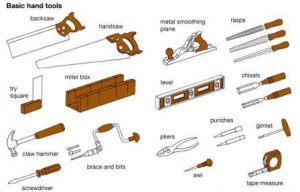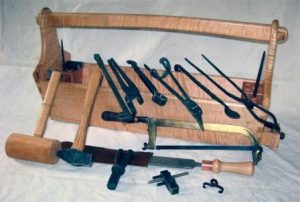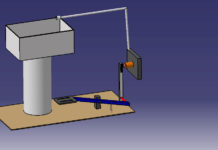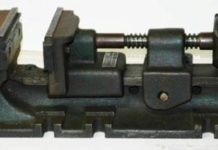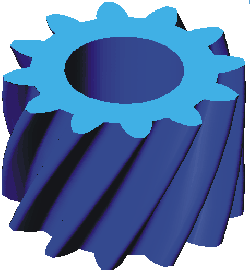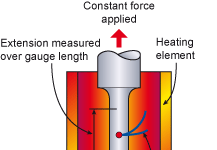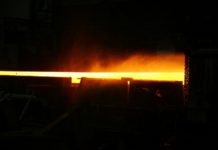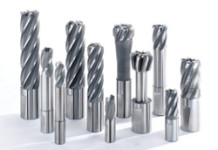COMMON HAND FORGING TOOLS
For carrying out forging operations manually, certain common hand forging tools are employed. These are also called blacksmith’s tools, for a blacksmith is one who works on the forging of metals in their hot state. The main hand forging tools are as under.
1. Tongs
2. Flatter
3. Swage
4. Fuller
5. Punch
6. Rivet header
7. Hot chisel
8. Hammers
9. Anvil
10. Swage block
11. Drift
12. Set-hammer
13. Brass scale
14. Brass
15. Black smith’s gauge
16. Heading tool
Some of the hand forging tool are depicted in Fig. and their applications are described as under.
Tongs
The tongs are generally used for holding work while doing a forging operation. Various kinds of tongs are shown in Fig.
1. Flat tongs are used for mainly for holding work of rectangular section.
2. Straight-lip fluted tongs are commonly used for holding square, circular and hexagonal bar stock.
3. Rivet or ring tongs are widely used for holding bolts, rivets and other work of circular section.
4. Gad tongs are used for holding general pick-up work, either straight or tapered.
Flatter
Flatter is shown in Fig. It is commonly used in forging shop to give smoothness and accuracy to articles which have already been shaped by fullers and swages.
Swage
Swage is used for forging work which has to be reduced or finished to round, square or hexagonal form. It is made with half grooves of dimensions to suit the work being reduced. It consists of two parts, the top part having a handle and the bottom part having a square shank which fits in the hardie hole on the anvil face.
Fuller
Fuller is used in forging shop for necking down a forgeable job. It is made in top and bottom tools as in the case of swages. Fuller is made in various shapes and sizes according to needs, the size denoting the width of the fuller edge Punch
Punch is used in forging shop for making holes in metal part when it is at forging heat.
Rivet header
Rivet header is used in forging shop for producing rivets heads on parts.
Chisels
Chisels are used for cutting metals and for nicking prior to breaking. They may be hot or cold depending on whether the metal to be cut is hot or cold. A hot chisel generally used in forging shop is shown in Fig. The main difference between the two is in the edge.
The edge of a cold chisel is hardened and tempered with an angle of about 60°, whilst the edge of a hot chisel is 30° and the hardening is not necessary. The edge is made slightly rounded for better cutting action.
Hand hammers
There are two major kinds of hammers are used in hand forging:
(1) the hand hammer used by the smith himself and
(2) the sledge hammer used by the striker.
Hand hammers (Fig.) may further be classified as
(a) ball peen hammer,
(b) straight peen hammer, and
(c) cross peen hammer.
Sledge hammers (Fig. 14.8) may further be classified as
(a) Double
face hammer,
(b) straight peen hammer, and
(c) cross peen hammer.
Hammer heads are made of cast steel and, their ends are hardened and tempered. The striking face is made slightly convex. The weight of a hand hammer varies from about 0.5 to 2 kg where as the weight of a sledge hammer varies from 4 to 10 kg.
Set hammer
A set hammer generally used in forging shop is shown in Fig. It is used for finishing corners in shouldered work where the flatter would be inconvenient. It is also used for drawing out the gorging job.
Anvil
An anvil is a most commonly tool used in forging shop which is shown in Fig. It acts as a support for blacksmith’s work during hammering. The body of the anvil is made of mild steel with a tool steel face welded on the body, but the beak or horn used for bending curves is not steel faced. The round hole in the anvil called pritchel hole is generally used for bending rods of small diameter, and as a die for hot punching operations. The square or hardie hole is used for holding square shanks of various fittings. Anvils in forging shop may vary up to about 100 to 150 kg and they should always stand with the top face about 0.75 mt. from the floor. This height may be attained by resting the anvil on a wooden or cast iron base in the forging shop.
Swage block
Swage block generally used in forging shop is shown in Fig. It is mainly used for heading, bending, squaring, sizing, and forming operations on forging jobs. It is 0.25 mt. or even more wide. It may be used either flat or edgewise in its stand.
Drift
Drift generally used in forging shop is shown in Fig. It is a tapered rod made of tool steel. Holes are opened out by driving through a larger tapered punch called a drift.
Hardie
Hardie is a type of chisel used in forging shop. It is shown in Fig. Its taper head is fixed into the hardie hole of the anvil, the cutting edge being upward. The part to be cut is kept over the cutting edge of the fixed hardie on anvil and another chisel is placed over the job and the cutting is performed by hammering.
Shovel
Shovel generally used in forging shop is shown in Fig. It is used to place coal or coke in the furnace. It is also used to set coal pieces in furnace and remove ash from furnace.
Poker
Poker (Fig.) is employed for removing clinker from the furnace and to loose the compact coal pieces in the furnace.
Rake
Rake (Fig.) is used to put coal pieces on tuyres.
Beak Iron
Beak iron generally used in forging shop is shown in Fig. It is also known as small anvil made of forged steel. Its upper front end consists of horn and upper back end comprises of flat tail. Its taper shank is inserted into the hardie hole of the anvil. It is commonly used as anvil for small forge work.
Source Introduction of a Basic Manufacturing Processes and Workshop Technology by Rajender Singh.


